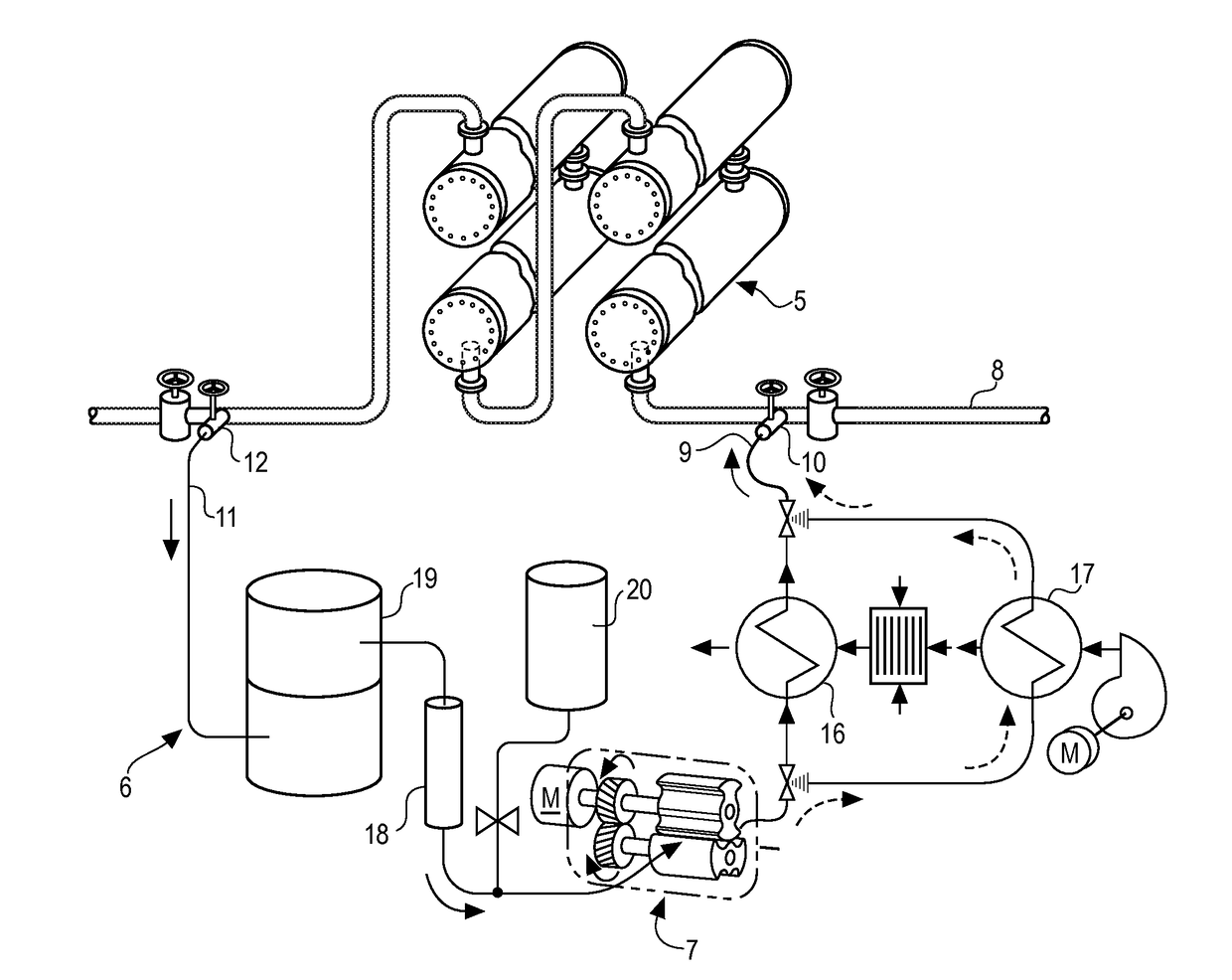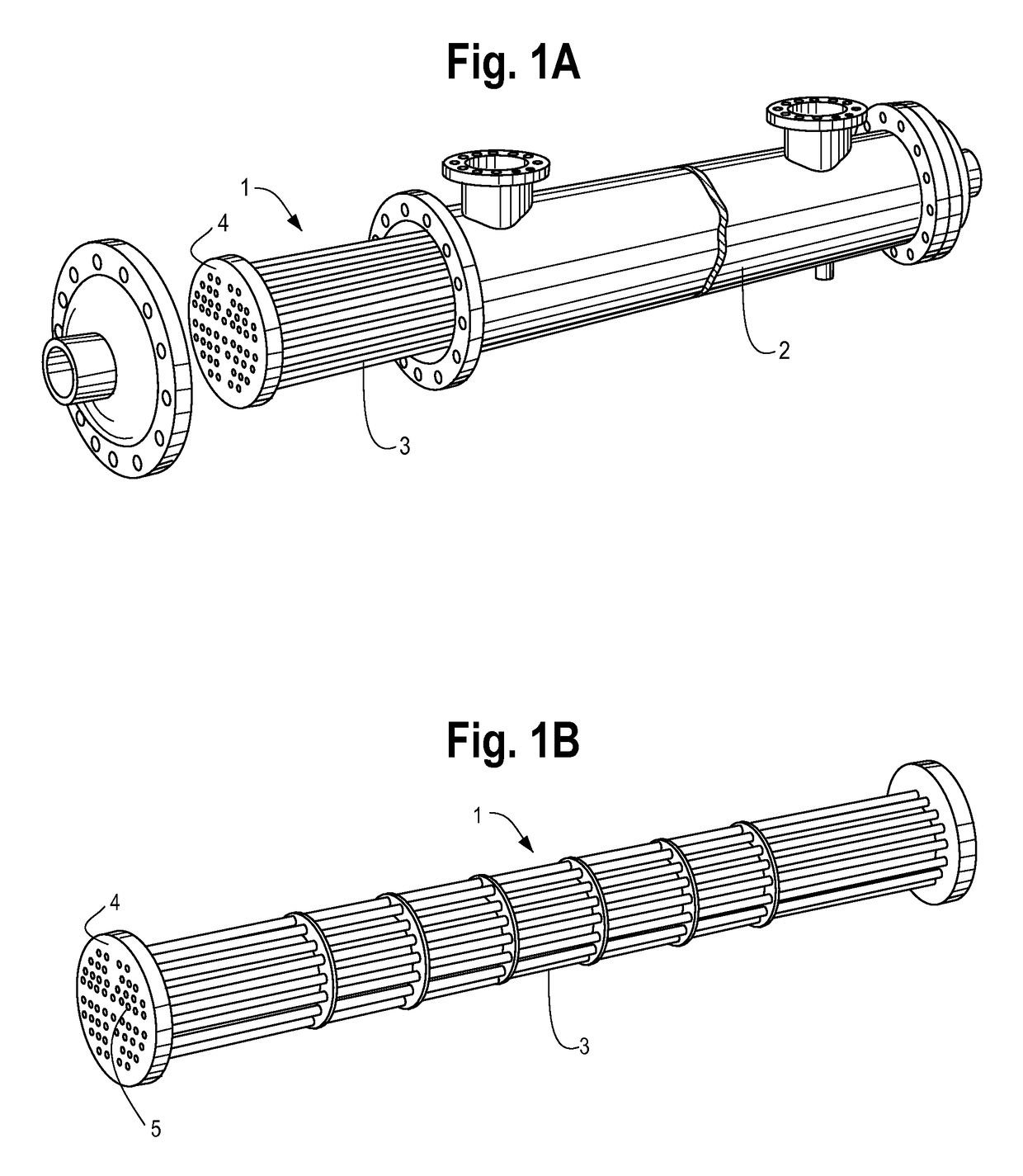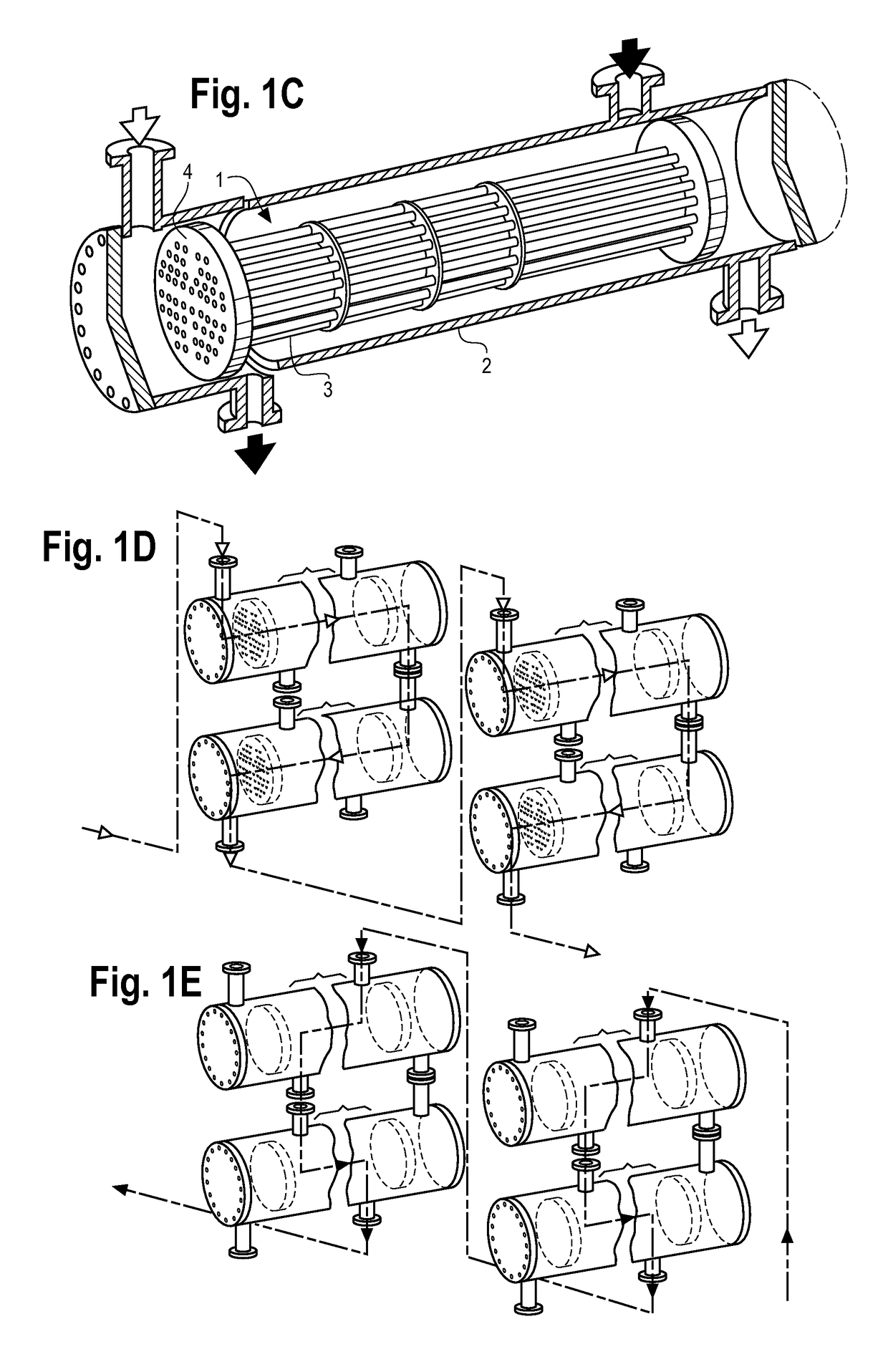Method and system for the in-situ removal of carbonaceous deposits from heat exchanger tube bundles
a technology of carbonaceous deposits and heat exchanger tubes, which is applied in the direction of flush cleaning, stationary tubular conduit assemblies, hollow article cleaning, etc., can solve the problems of reducing the efficiency of the heat exchanger, requiring the operator to consume more energy to achieve the desired degree of temperature change, and the cleaning of heat exchanger tube bundles is a significant source of productivity loss, so as to prevent the release of solvents into the environment and the need for expensive disposal measures, and achieve cost-effectiv
- Summary
- Abstract
- Description
- Claims
- Application Information
AI Technical Summary
Benefits of technology
Problems solved by technology
Method used
Image
Examples
Embodiment Construction
[0025]A heat exchanger tube bundle of the type that may be treated by the present invention is illustrated in FIGS. 1A to 1C. A heat exchanger tube bundle 1 is made up of a large number of individual tubes packed together to form a cylindrical structure. When in use, the heat exchanger tube bundle is surrounded by a shell 2. Accordingly, a heat exchanger tube bundle 1 comprises an exterior, or shell-side, surface 3 and an interior, tube-side, surface 4. Heat exchanger bundles are often very large, typically ranging up to 84 inches in diameter and 30 feet in length. When used in certain industries, such as the gas and oil industry, a number of heat exchanger tube bundles are often used in series in a network known as a heat exchanger train 5, examples of which are illustrated in FIGS. 1D to 1E and FIG. 2.
[0026]Through the method and system of the present invention, a heat exchanger tube bundle 1 may be cleaned in-situ, that is, without being removed from the associated equipment with...
PUM
 Login to View More
Login to View More Abstract
Description
Claims
Application Information
 Login to View More
Login to View More - R&D
- Intellectual Property
- Life Sciences
- Materials
- Tech Scout
- Unparalleled Data Quality
- Higher Quality Content
- 60% Fewer Hallucinations
Browse by: Latest US Patents, China's latest patents, Technical Efficacy Thesaurus, Application Domain, Technology Topic, Popular Technical Reports.
© 2025 PatSnap. All rights reserved.Legal|Privacy policy|Modern Slavery Act Transparency Statement|Sitemap|About US| Contact US: help@patsnap.com



